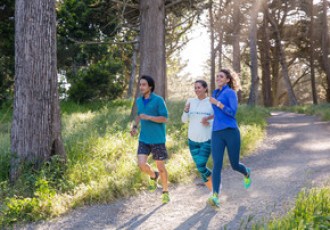BestReviews is reader-supported and may earn an affiliate commission. Details
We recommend these products based on an intensive research process that's designed to cut through the noise and find the top products in this space. Guided by experts, we spend hours looking into the factors that matter, to bring you these selections.

If you work hard at staying fit, there are lots of ways to make the most of your exercise regimen. Gyms offer numerous types of equipment to help you reach your goals, and the outdoors is ideal for getting your body in motion, whether by walking, hiking, or running. On the other hand, maybe you’re looking for something out of the ordinary to give your fitness activities a boost. A weighted vest could be exactly what you need.
You may be new to this type of fitness gear, or perhaps you’ve considered purchasing one but didn’t know where to start. We can help you weed through the particulars of weighted vests so you can choose one to fit your body type and athletic needs.

Weighted vests are garments with pockets for sandbags, metal bars, or other dense, hefty materials that are distributed evenly throughout the structure. The vests can be worn by men or women. Some of their features include the following.
Padding to help prevent chafing.
Belts, Velcro, or other adjustable closures for a customizable fit.
Different styles and weight levels for a variety of needs (including slim-fit vests to wear under clothing).
Weighted vests are commonly used by athletes or individuals in law enforcement or the armed forces to make the most of resistance, strength, and endurance training, but even people who do light workouts or leisure walks to stay in shape can benefit from the distributed weight of these unique vests.
No matter your fitness goal – from losing weight to building muscle mass to simply staying active and fit – using a weighted vest can help you achieve it. Benefits of weighted vests include the following.
Weight training builds lean muscle mass.
Adding weight to the body increases the heart rate to help maximize the cardio benefits of exercise.
Added weight helps build bone density and strength over time.
Added weight helps you burn calories more quickly when walking, running, or doing calisthenics.
The weight distribution helps strengthen your core.
Mid-level athletes can advance more quickly toward their goals.
The added resistance helps well-trained athletes further increase endurance.

Weighted vests are not one-size-fits-all fitness tools. Rather, they come in a variety of weight limits – some fixed, some adjustable – to match each consumer’s body structure and fitness level. Whether you choose a vest with embedded or fixed weights, each type has its advantages and disadvantages.
Pros:
Easy to use
Range from minimal weight to about 12 pounds
Comfortable, simple structure; better for outdoor use on warm days
Cons:
Weights not removable
Weights not adjustable
Not heavy enough for some athletes
Pros:
More structured design
Cover more of torso
Pockets for weights
Adjustable weights
Cons:
Warmer
More restrictive
More expensive
Sandbag weights can leak

If you are serious about working out or weight training, you may find the benefits of a weighted vest worth the investment. This gear is not extremely expensive. You can expect to pay between $30 and $100.
Vests with lighter weights cost $30 to $40.
Vests weighing around 20 pounds may $60 to $100 or slightly more.
Some brands may be more or less expensive not because of the weight but because of the quality and detail of the design. For example, a vest with adjustable weights or patented closures will cost more.
Make sure you’re up for the challenge. If you’re just starting a fitness routine, a weighted vest may be too much for you at first. If you have any doubts, it’s a good idea to check with your doctor before you begin using one.
Start slowly. Begin with light exercises to get your body used to a new activity before you put on a weighted vest, especially if you’ve been sedentary for a while. Advance to lifting three- to five-pound hand weights before donning a weighted vest.
Make sure you can perform an activity before adding a vest. If you plan to walk wearing a weighted vest, first make sure you can go your chosen distance without one.
Remember to warm up before exercising. Even if you’re comfortable working out with a weighted vest, start your exercise session with jumps, stretches, and a bit of jogging in place to get your body ready to work out wearing your vest.

A. Once you’ve finished cycling, walking, or doing calisthenics or other activities while wearing your vest, walk slowly for five to ten minutes and stand for a few minutes before resting.
A. The best fit is snug but not too tight. You want your vest to be tight enough to stay put and not move around but loose enough for comfort. If it feels insecure or uncomfortable, try adjusting the closures.
A. While you might want to try a 10- to 12-pound vest if you’re new to this type of gear, a 20-pound vest may work for you if you are active and physically fit. There are several unisex models available, which are more likely to give you the best fit.
Get emails you’ll love.
Learn about the products you’re wondering if you should buy and get advice on using your latest purchases.
